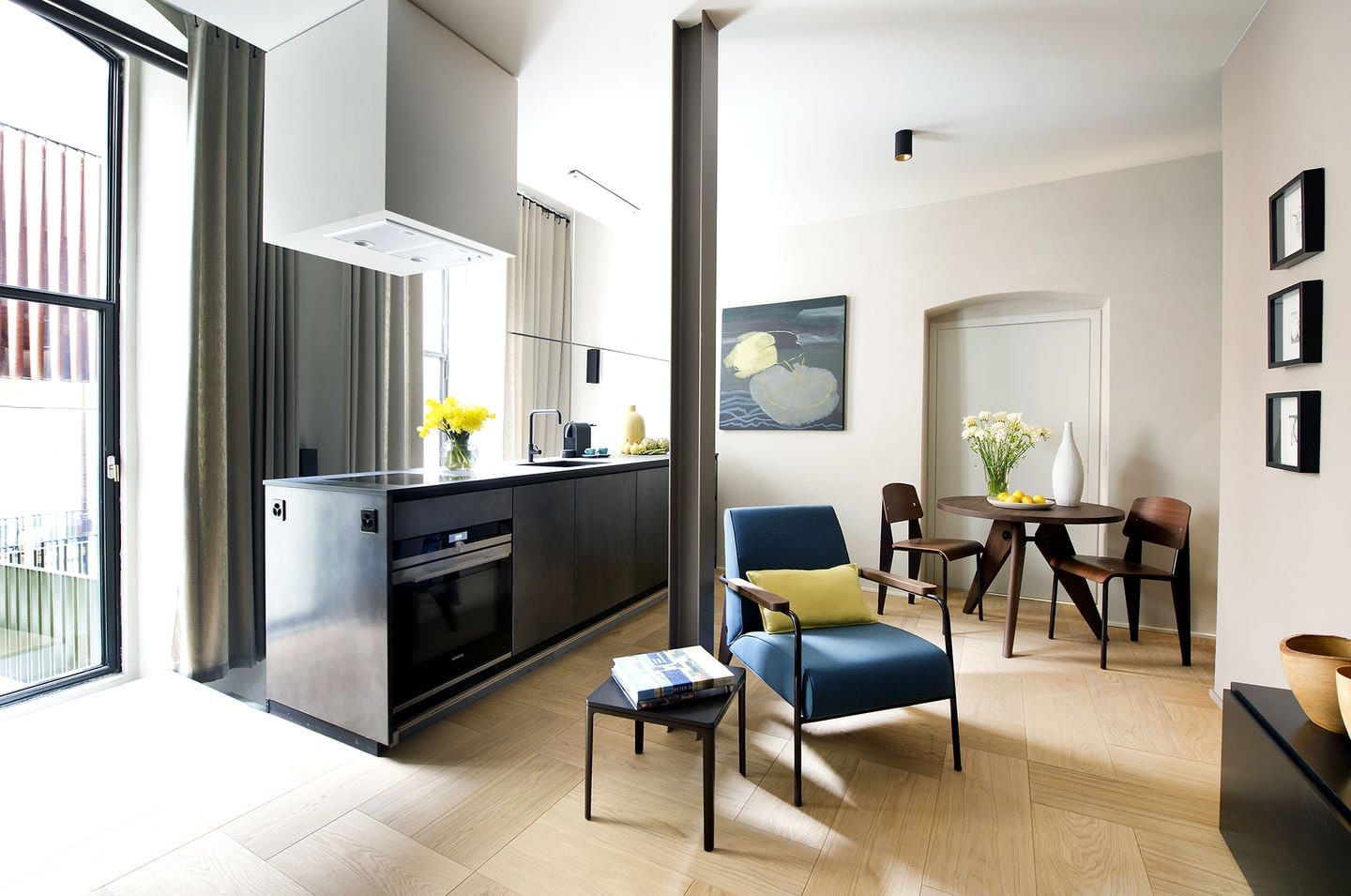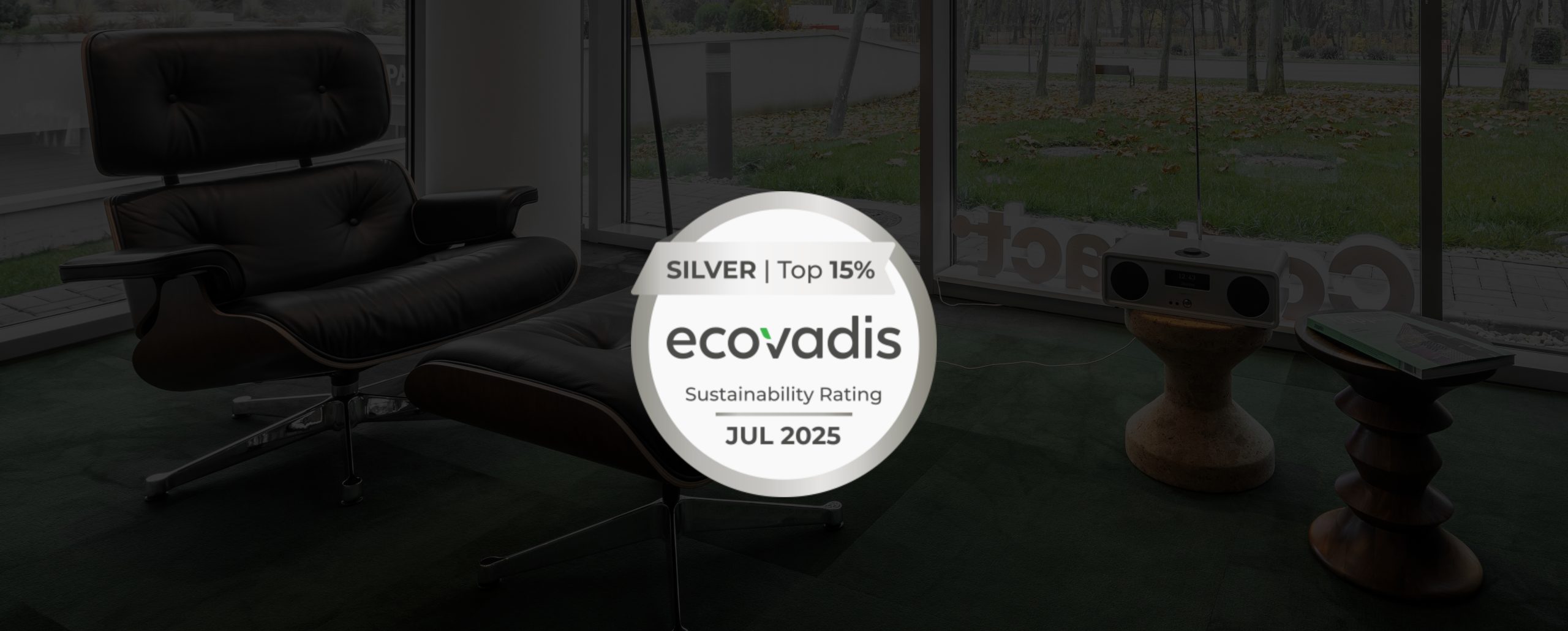
News and views

When a Vitra furniture piece arrives in a home, an office or a public space, it brings not only functionality or beauty, but a long story of innovation and creativity. A story of the designer who, in collaboration with Vitra, starts a seemingly endless development process, filled with trials and errors. A story of a manufacturing attitude where the details are not only details, but a gamechanger in terms of quality. A story that grows more and more beautiful with every space that hosts a Vitra Original, offering its empty canvas as another page.
The French designer, architect and engineer Jean Prouvé created the Standard Chair in 1934. This design essentially exemplifies a fundamental aspect of Prouvé’s numerous furniture designs and architectural works: his unwavering focus on structural requirements.
Prouve’s main achievement was transferring manufacturing technology to architecure – he was both designer and manufacturer of his product ideas. He was born in Nancy, France, and his parents were both artists – Victor Prouve (painter and sculptor) and Marie Duhamel (pianist). Being raised in an artistic circle, Jean grew up surrounded by art. He graduated from Fine Arts School in Nancy and then he worked in a parisian metal workshop before opening his own workshop in 1924.
In the following years he created numerous furniture designs, and in 1947 he estabilished his own factory. Unfortunately, as a result of some conflicts with the shareholders, Prouve left the company in 1953. In the next decades, he worked as a consulting engineer on an number of important architectural projects in Paris. His eventful career path is the reason why all his creations embody a wide range of ideas, technologies and means of inspiration.
Prouvé’s work encompasses many unique objects in all areas of life, from a letter opener to door and window fittings, from lighting and furniture to façade elements and prefabricated houses, from modular building systems to large exhibition structures – essentially, almost anything that is suited to industrial production methods.

The Standard chair has evolved into one of the most famous classics of the French ‘constructeur’. The seat and backrest of this understated, iconic chair are available in various types of wood, and the metal frame comes in different colours. Most models had a metal frame and legs, with a seat and backrest made of wood. Other variations were made completely of metal or – especially during wartime and the related metal shortages – entirely of wood. Some had cushions in various materials, or demountable components for ease of transport; the last models with back legs made of aluminium followed in the 1950s.
The load on the back legs of a chair, where it supports the weight of the sitter’s upper body, is greater than on the front legs. This is hardly a surprising discovery, but no other seating design demonstrates this principle as clearly as the Standard Chair: while tubular steel suffices for the front legs, which bear a relatively light load, the back legs are made of voluminous hollow sections that transfer the primary stress to the floor. The profile of the back legs, formed from thin bent sheet steel, resembles an aircraft wing, with the widest measurement at the point where the leg meets the seat frame – that is, where the stress is greatest. The tapered shape of the hollow section from the seat surface upwards simultaneously defines the angle and position of the backrest.

The 1934 model was introduced as Chair No. 4, since it had been preceded by three prototypes; further versions continued to be developed under the name ‘Standard’. Up until the early 2000s, the work of Jean Prouvé was known outside of France to just a small circle of architects and collectors. Although re-editions of his furniture existed, his designs did not find the attention and distribution they deserve.
The colours Prouvé developed for his furniture drew on various references – from his Blé Vert, which describes the colour of young green wheat, to Gris Vermeer, which alludes to the grey tones in the work of the painter Johannes Vermeer. Yet according to Prouvé, who believed in the ‘nature of a material’, only parts in danger of corroding should be painted, which is why he left wooden and aluminium elements in an untreated state whenever possible. However, beyond the practical benefit of rust protection, Prouvé was aware that he could use colours to instil his furniture designs with a certain aura.
After more than twenty years, Vitra completed the collection with new colors and Standard Chair is now available also in colors like Gris Vermeer, Bleu Dynastie, Ble Vert and Bleu Marcoule. You cand also find the Metal Brut variant, in unpainted steel.

Why does a company like Vitra, who is committed to contemporary design, also continues to produce furniture that was created decades ago? Because some designs from the past remain unsurpassed and have lost none of their vitality or relevance. Notable examples include the work of Charles and Ray Eames, Alvar Aalto, Ludwig Mies van der Rohe, Marcel Breuer – and likewise Jean Prouvé.
The term “original” has nothing to do with the production date. The status of an original is determined by the relationship between the designer (or rightful heirs) and the manufacturer of the designer’s products. There is not only a legal component to this relationship, but also an immaterial one based on shared ideals and mutual cooperation.
For any product to be designated as an “original“, the originator of the design must have given the manufacturer the legal authorisation to produce it. Anyone who produces a design without legal permission is appropriating property that belongs to someone else. This applies not only to the manufacturer, but also to the consumer who buys an unlicensed product.
Invest in an original, for it will always retain its worth. An imitation will never be anything but a copy, a stolen idea. Appreciate the differences – not just the quality and more obvious variances but also the sensory and emotional appeal of the authentic product. An original is a lifelong companion and may well outlive you to be gratefully received by the next generation.
Recommended articles

Project1 Achieves EcoVadis Silver Sustainability Rating
We are proud to share an important milestone in our sustainability journey: Project1 has been awarded the Silver Sustainability Rating by EcoVadis, placing us among the top 15% of companies assessed worldwide. This recognition reflects the work we have done over the past years to integrate sustainability into everything we do – from the way […]

Beyond Furniture: Actiu’s Sustainable Legacy
Actiu, the Spanish benchmark in the design and manufacture of workspace furniture, has long championed sustainability as a fundamental pillar of its operations. With more than 50 years of experience and a presence in more than 90 countries, this family business based in Castalla (Alicante) is an example of how industrial development can coexist in […]
On Instagram
Follow us on Instagram for daily inspiration on amazing spaces and iconic products.

